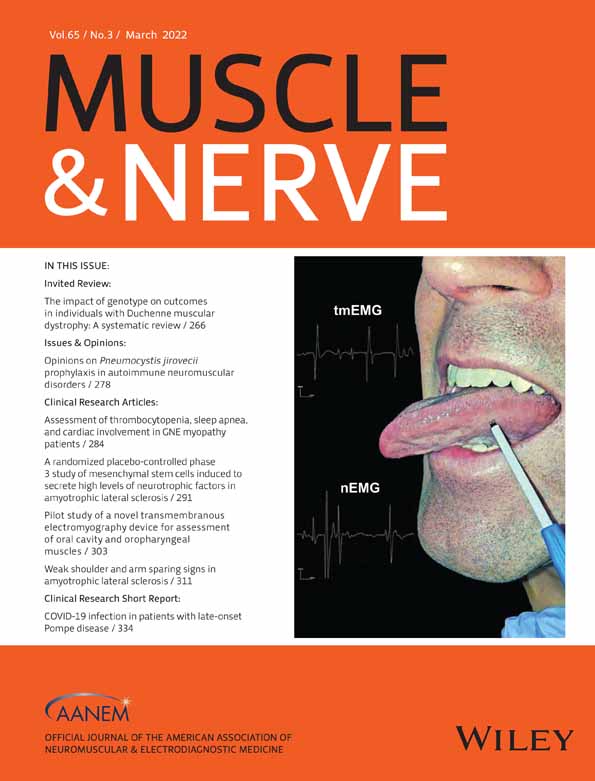Weak shoulder and arm sparing signs in amyotrophic lateral sclerosis
Funding information: Grants-in-Aid for Scientific Research, Grant/Award Number: 19K07966; Japan Agency for Medical Research and Development, Grant/Award Number: 19ek0109252h0003
Abstract
Introduction/Aims
Various signs of selective involvement have been reported in amyotrophic lateral sclerosis (ALS). In this study, we describe two new signs, “weak shoulder” and “arm sparing” signs.
Methods
Subjects were retrospectively identified from our electrodiagnosis database. Medical Research Council scores of relevant muscles were evaluated. Weak shoulder was defined as the deltoid (Del) muscle being weaker than the biceps brachii (BB)/triceps brachii (TB) muscles; that is, Del was weaker than either or both of the muscles and no stronger than either. Arm sparing was defined as both Del and the first dorsal interosseous (FDI) being weaker than BB/TB. Sensitivities of these signs were compared with other signs of selective involvement. The specificities of these signs were investigated in patients with cervical spondylotic amyotrophy (CSA) and multifocal motor neuropathy (MMN).
Results
We reviewed 130 patients with ALS, 64 patients with CSA, and 16 patients with MMN. The weak shoulder and the arm sparing signs were observed in 73% and 55% of patients with ALS, 44% and 2% of patients with CSA (93% and 0% of patients with proximal CSA), respectively, and no patients with MMN. The sensitivity of the weak shoulder was higher than with conventional signs, whereas that of the arm sparing sign showed no difference.
Discussion
The weak shoulder sign was highly sensitive in ALS, and was specific when compared with MMN. The arm sparing sign was highly specific for ALS. These two new signs are promising as clinical clues in the diagnosis of ALS.
CONFLICT OF INTEREST
None of the authors has any conflict of interest to disclose.
Open Research
DATA AVAILABILITY STATEMENT
Data available on request from the authors.




